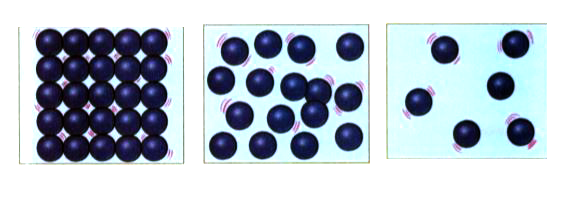The state of matter that does not have a fixed shape or a fixed volume
To answer the question, "The state of matter that does not have a fixed shape or a fixed volume," we can follow these steps:
1. Identify the States of Matter:
- Matter exists in three primary states: solid, liquid, and gas.
2. Characteristics of Solids:
- Solids have a fixed shape and a fixed volume. This means that a solid object maintains its shape regardless of the container it is in.
3. Characteristics of Liquids:
- Liquids do not have a fixed shape; they take the shape of the container they are in. However, liquids do have a definite volume, meaning the amount of liquid remains constant regardless of the shape of the container.
4. Characteristics of Gases:
- Gases do not have a fixed shape or a fixed volume. They expand to fill the shape of their container and can also change volume depending on the pressure and temperature conditions.
5. Conclusion:
- Based on the characteristics of each state of matter, the state that does not have a fixed shape or a fixed volume is gas.
Final Answer:
The state of matter that does not have a fixed shape or a fixed volume is gas.
---
- Matter exists in three primary states: solid, liquid, and gas.
- Solids have a fixed shape and a fixed volume. This means that a solid object maintains its shape regardless of the container it is in.
- Liquids do not have a fixed shape; they take the shape of the container they are in. However, liquids do have a definite volume, meaning the amount of liquid remains constant regardless of the shape of the container.
- Gases do not have a fixed shape or a fixed volume. They expand to fill the shape of their container and can also change volume depending on the pressure and temperature conditions.
- Based on the characteristics of each state of matter, the state that does not have a fixed shape or a fixed volume is gas.
The state of matter that does not have a fixed shape or a fixed volume is gas.
Topper's Solved these Questions
- MATTERBOOK - ICSECHAPTER - MATTEREXERCISE - Exercises (Section I) Choose the correct option
5 Videos
- MATTERBOOK - ICSECHAPTER - MATTEREXERCISE - Exercises (Section I) Write T for True and F for False. Correct the False statements
5 Videos
- MAGNETISMBOOK - ICSECHAPTER - MAGNETISMEXERCISE - Picture Based Questions
12 Videos
- MODEL TEST PAPERS BOOK - ICSECHAPTER - MODEL TEST PAPERS EXERCISE - TEST PAPER II (SECTION II) Numerical questions
2 Videos
Similar Questions
The three states of matter
View SolutionFill in the blanks :
( d) The state of matter with definite volume and definite shape is called ................ .
View SolutionThe state of matter which has no definite shape or volume is called
View SolutionWhy solids have definite shape and volume ?
View Solution
a.Identify which of the above pictures shows particle arrangement in solids, liquids and gases. Write in the space below each picture.
b. Which state of matter would you expect to show a fixed volume?
c. Why do you think gases can flow whereas solids cannot?
View SolutionThe tendency of matter to change in shape, area, and volume in response to a change in temperature
View SolutionThe fourth state of matter ………..
View SolutionExplain the following:
Gases have no definite shape nor a definite volume of their own.
View SolutionName the state of matter that changes to gaseous state on heating.
View SolutionIn which state of matter does sound travel the fastest?
View Solution
